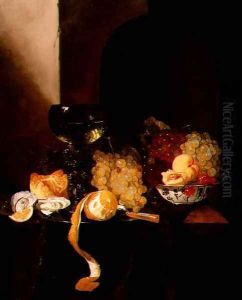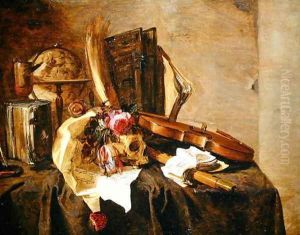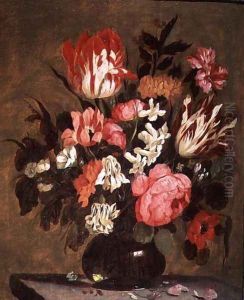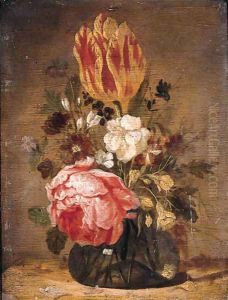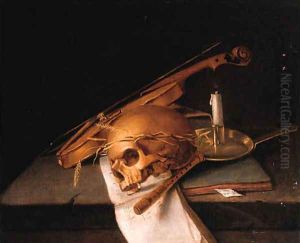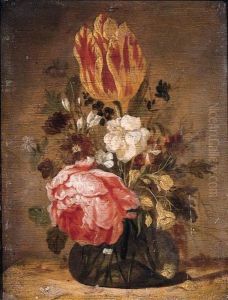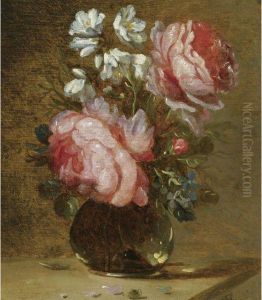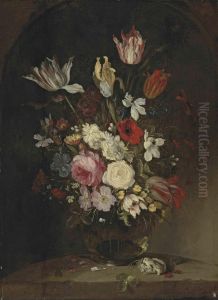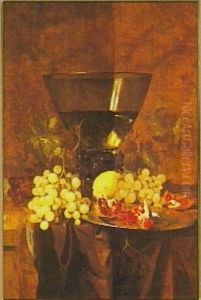Jacques de Claeuw Paintings
Jacques de Claeuw, also spelled as Jacob de Claeuw or Jacob Claesz. de Claeuw, was a Dutch Golden Age painter known for his still life paintings. Born in Dordrecht in the Netherlands in 1623, de Claeuw became an important figure in the development of still life painting in Holland during the 17th century.
De Claeuw's works typically feature an array of objects, often including shells, fish, and glassware, which showcase his skill in rendering different textures and surfaces. He is particularly noted for his 'banketje' or 'banquet pieces', still lifes that include food and drink, set against a neutral background that emphasizes the composition and the interplay of light and shadow.
Although de Claeuw's early life and training are not well documented, it is known that he became a member of the Guild of Saint Luke in Leiden in 1642. This suggests that he received formal training in the arts and was recognized by his peers for his artistic abilities. His membership in the guild also indicates that he was working professionally as an artist by that time.
De Claeuw moved to Gouda in 1651, where he continued to work and contribute to the local artistic scene. His paintings from this period show a high level of craftsmanship and are emblematic of the still life genre that was flourishing in the Netherlands during this time.
The exact date of Jacques de Claeuw's death is uncertain, but it is believed that he died around 1694. While he may not be as widely recognized as some of his contemporaries like Jan Davidsz. de Heem or Willem Claesz Heda, de Claeuw's work remains an important part of the Dutch still life tradition, and his paintings are held in various museum collections around the world. His legacy is that of a skilled painter who captured the simple elegance of everyday objects, making them subjects worthy of contemplation and appreciation.
